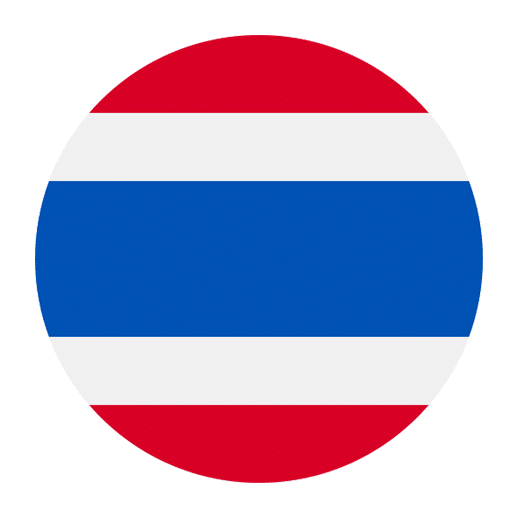Thailand, known for its stunning beaches, crystal-clear waters, and vibrant marine life, is a paradise for ocean enthusiasts. For those learning Thai, being able to discuss marine life can greatly enrich your experience, especially if you find yourself exploring Thailand’s diverse underwater ecosystems. In this article, we’ll dive into essential Thai vocabulary that will help you talk about marine life with ease.
Basic Marine Life Vocabulary
Before we delve into more specific terms, it’s important to start with some basic vocabulary. Knowing these words will serve as a foundation for more complex discussions.
– ทะเล (talay) – Sea
– มหาสมุทร (mahā samut) – Ocean
– ชายหาด (chai hāt) – Beach
– น้ำ (nám) – Water
– ปลา (plā) – Fish
– ปะการัง (pa kā rang) – Coral
– เกาะ (ko) – Island
– สัตว์ทะเล (sàt talay) – Marine Animal
Types of Fish
Fish are a significant part of marine life, and Thailand’s waters are home to numerous species. Here are some common fish names you might encounter:
– ปลาฉลาม (plā chálam) – Shark
– ปลาวาฬ (plā wān) – Whale
– ปลากระเบน (plā kraben) – Stingray
– ปลาการ์ตูน (plā kārtoon) – Clownfish
– ปลาหมึก (plā muek) – Squid
– ปลาทูน่า (plā tuna) – Tuna
– ปลาแซลมอน (plā săelmon) – Salmon
Other Marine Animals
Beyond fish, the ocean is full of various other fascinating creatures. Here are some vocabulary words for other marine animals:
– เต่าทะเล (tàw talay) – Sea Turtle
– ปู (pū) – Crab
– กุ้ง (gûng) – Shrimp
– กุ้งมังกร (gûng mong korn) – Lobster
– แมงกะพรุน (maeng kà prun) – Jellyfish
– หอย (hŏi) – Shellfish
– ปลาหมึกยักษ์ (plā muek yâk) – Octopus
Marine Plants and Coral
Marine plants and corals are vital for the underwater ecosystem. Here are some key terms:
– สาหร่ายทะเล (săa rài talay) – Seaweed
– ปะการังอ่อน (pa kā rang òn) – Soft Coral
– ปะการังแข็ง (pa kā rang kăeng) – Hard Coral
– หญ้าทะเล (yâa talay) – Seagrass
Describing Marine Environments
To talk about marine life, it’s also useful to describe the environments they live in. Here are some terms to help you:
– แนวปะการัง (naew pa kā rang) – Coral Reef
– ถ้ำใต้น้ำ (tâm tâi nám) – Underwater Cave
– แหล่งน้ำตื้น (lèng nám dtûen) – Shallow Water
– แหล่งน้ำลึก (lèng nám lʉ̂k) – Deep Water
– พื้นทราย (pêŭn saai) – Sandy Bottom
– พื้นหิน (pêŭn hĭn) – Rocky Bottom
Activities Related to Marine Life
When discussing marine life, you might also want to talk about activities related to the ocean. Here are some useful phrases:
– ดำน้ำ (dam náam) – Diving
– ดำน้ำตื้น (dam náam dtûen) – Snorkeling
– พายเรือ (paai rʉa) – Kayaking
– ตกปลา (dtòk plā) – Fishing
– ดูปะการัง (dū pa kā rang) – Coral Watching
Environmental Conservation
Conserving marine life is crucial, and knowing how to talk about environmental issues in Thai can help you contribute to conservation efforts. Here are some terms:
– อนุรักษ์ (a-nú-rák) – Conserve
– สัตว์ทะเลใกล้สูญพันธุ์ (sàt talay glâi sǔn pan) – Endangered Marine Animals
– มลพิษทางทะเล (mon-lá-pít thang talay) – Marine Pollution
– ขยะทะเล (kà-yà talay) – Marine Debris
– อาสาสมัคร (aa-săa-màk) – Volunteer
– ทำความสะอาดชายหาด (tham khwaam sà-àat chai hāt) – Beach Clean-Up
Useful Phrases
To help you put these words into practice, here are some useful phrases for discussing marine life in Thai:
– คุณเคยดำน้ำที่ไหนบ้าง? (kun koie dam náam tîi năi bâang?) – Where have you gone diving?
– ปลาตัวนี้ชื่ออะไร? (plā dtua níi chʉ̂ʉ à-rai?) – What is the name of this fish?
– แนวปะการังที่นี่สวยมาก (naew pa kā rang tîi nîi sŭai mâak) – The coral reef here is very beautiful.
– เราต้องอนุรักษ์สัตว์ทะเล (rao dtông a-nú-rák sàt talay) – We must conserve marine animals.
– น้ำที่นี่ใสมาก (náam tîi nîi săi mâak) – The water here is very clear.
Practice Conversations
Engaging in conversations can help solidify your vocabulary. Here are a few practice dialogues:
Dialogue 1:
A: คุณเคยดำน้ำที่ไหนบ้าง? (kun koie dam náam tîi năi bâang?) – Where have you gone diving?
B: ฉันเคยดำน้ำที่เกาะเต่า (chăn koie dam náam tîi ko tàw) – I have gone diving at Koh Tao.
A: แนวปะการังที่นั่นเป็นยังไงบ้าง? (naew pa kā rang tîi nân pen yang ngai bâang?) – How is the coral reef there?
B: สวยมาก มีปลาหลากหลายชนิด (sŭai mâak, mii plā làak làai chà-nít) – Very beautiful, with many different types of fish.
Dialogue 2:
A: คุณรู้ไหมว่าปลาตัวนี้ชื่ออะไร? (kun rúu măi wâa plā dtua níi chʉ̂ʉ à-rai?) – Do you know what this fish is called?
B: นั่นคือปลาการ์ตูน (nân kʉʉ plā kārtoon) – That is a clownfish.
A: มันสวยมาก (man sŭai mâak) – It’s very beautiful.
B: ใช่ ฉันชอบดูมันว่ายน้ำ (châi, chăn chôp dū man wâai náam) – Yes, I like watching it swim.
Additional Tips
1. **Watch Documentaries and Read Articles**: Watching Thai documentaries about marine life or reading articles can help you familiarize yourself with the terminology in context.
2. **Use Flashcards**: Create flashcards with the Thai word on one side and the English translation on the other. This method is great for memorization.
3. **Practice with Native Speakers**: If possible, engage in conversations with native Thai speakers who have an interest in marine life. This will not only help you practice but also provide you with new insights.
4. **Visit Aquariums and Marine Parks**: Visiting places like aquariums or marine parks in Thailand can help you see the marine animals and plants firsthand, making it easier to remember their names.
5. **Join Online Forums or Groups**: Engage with online communities focused on marine life in Thailand. This can provide you with a platform to practice and discuss your interests with others.
By learning these essential Thai vocabulary words and phrases, you’ll be better equipped to discuss marine life, whether you’re diving in the Andaman Sea, exploring coral reefs, or simply chatting with locals about Thailand’s rich underwater world. Happy learning and enjoy your marine adventures in Thailand!

